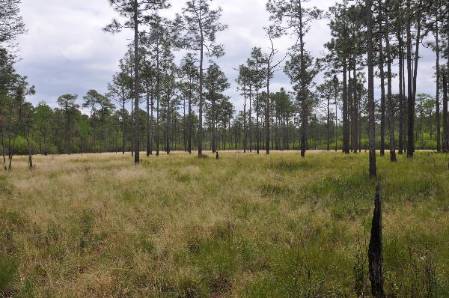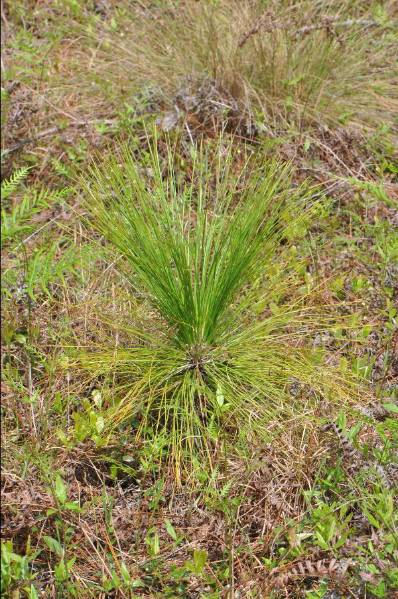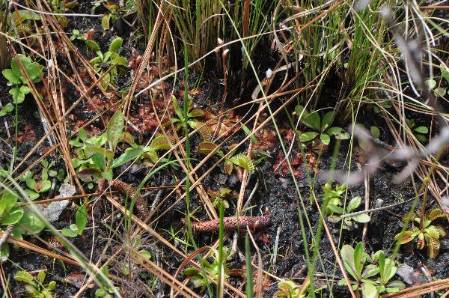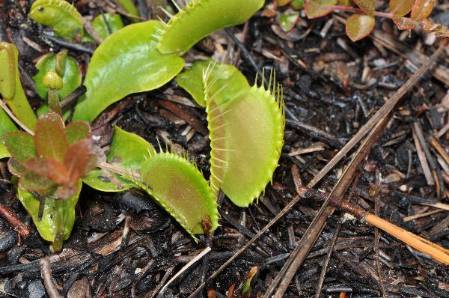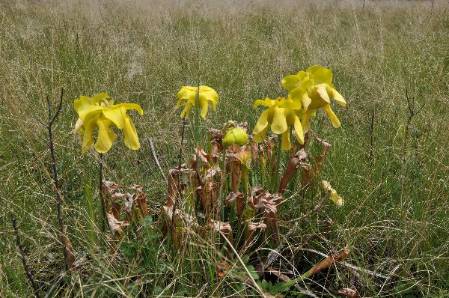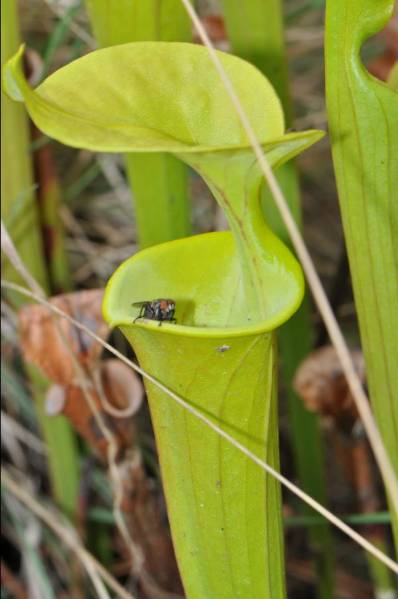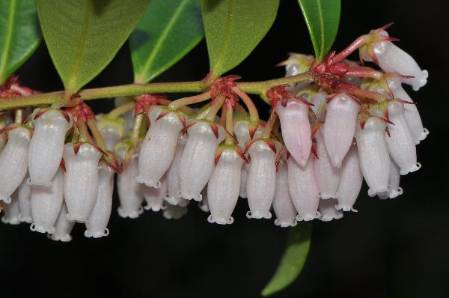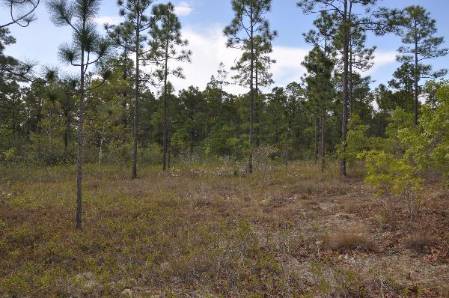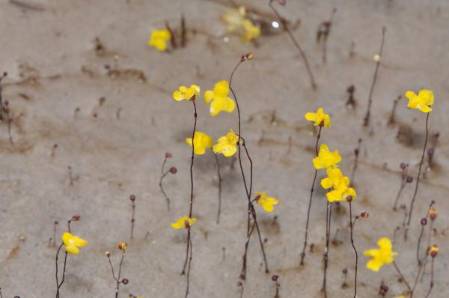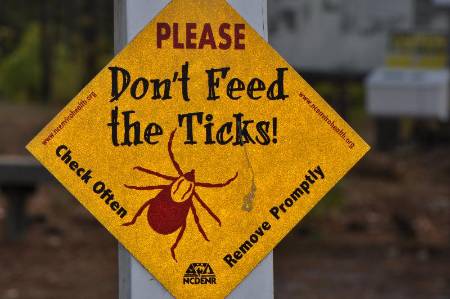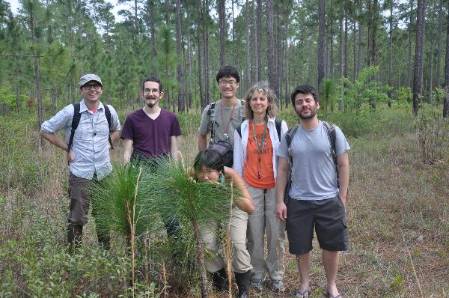I finished most of what I wanted to do (this trip!) in the Duke herbarium – so my kind hosts thought it might be nice to go see the rare and endangered (in the wild) Venus-flytrap in the swamp. I jumped at the chance – these extraordinary plants are common in cultivation, but the chance to see them in their native habitat was so exciting!
We were headed to the Green Swamp – near the coast of North Carolina – in the middle of the very narrow range of these wonderful plants. They only occur in the swamps of North and South Carolina in a radius of about 90 miles! We met an ex-graduate student of Kathleen’s and now professor at University of North Carolina Wilmington, Eric Shuettpelz and his student Alex Davila, who know this area well.
Carnivore country
The vegetation in these coastal areas is quite special – the soil is bright white sand and the forest are composed of various species of pines, interspersed with grassy open areas and shrubby thickets, called pocosins. The pine species are different in the pocosins and forests – it is an interesting mosaic.
The mosaic is maintained by burning – these areas are burned regularly through lightening fires and the Nature Conservancy, who look after these pieces of pristine habitat, regularly conduct controlled burns, usually in winter, to keep the shrubs from taking over. The main pine species of the open areas is the long-leaf pine – Pinus palustris.
Controlled burns are not so hot as to completely decimate the forest, but clear out the understory and let light in – this area was probably burned a couple of years ago.
The young plants of long-leaf pine persist in a grass-like state for years, until a fire comes along and opens the canopy so they can grow tall.
We emerged from our first pocosin – thick with holly, magnolias and lots of rhododendron and blueberry relatives – and looked down on the wet ground amongst the grasses, and there they were – the carnivores! Venus flytraps and sundews, growing together on the wet ground. Not quite the size of those of the film Little Shop of Horrors, but pretty exciting all the same. If you weren’t looking carefully, you would walk right by or even on top of them.
Venus flytraps (Dionaea muscipila) and sundews (Drosera leucantha) catch their prey in totally different ways – both with modified leaves.
Sundews have sticky glands all over the leaves that trap insects in their glue, then the stalks of the glands themselves bend to further engulf the prey.
Venus flytrap leaves are modified into a sort of snap-jaw trap – tiny hairs in the open surface trigger the folding of the leaf like a prison when an insect blunders in; the spiky leaf edges mean the trap is shut even before the leaf itself completely closes.
Insectivorous plants usually grow in nutrient-poor soils; it is thought that they obtain nitrogen much needed for growth from their insect prey. Charles Darwin was fascinated by insectivorous plants, and a good review of their biology and diversity was published in his celebration year in 2009.
The shut trap in this individual just has a piece of stick, so I think insect catching must be relatively rare!
Further on, in the grass under the long-leaf pines – we saw yet another famous carnivorous plant – the yellow pitcher plant Sarrecenia lutea. The insect trapping leaves of these plants are long erect tubes in which water collects – the rim is slippery and an unaware insect can plunge to its death, to be decomposed and its nutrients absorbed by the plant. Not quite as active as the flytrap, but pretty effective nonetheless.
The flowers of pitcher plants are large and showy and have a most peculiar umbrella-like style that looks like a flying saucer in the middle of the bloom.
This fly looks like it will probably escape – so again, trapping is not a common occurrence, the pitchers are not full of insects.
At the Green Swamp we also saw two other carnivorous plants – the butterwort (Pinguicula) and the bladderwort (Utricularia), and a host of other fascinating plants special to these swampy, nutrient-poor habitats. Members of the blueberry and rhododendron family – Ericaceae – are very common and important members of the shrub layer in these communities.
This blueberry relative – Lyonia lucida – has dry capsular fruits rather than the juicy berries we associate with its relatives.
We finished the day with another stop at Boiling Springs Lake – a more upland forest with pines and oaks.
The turkey oak-pine forest is more open than that we saw at Green Swamp.
At Boiling Springs Lake we saw bladderworts in abundance – tiny yellow flowers about 2 mm across emerging from the white sand at stream edges. The leaves of these plants trap water shrimp (Daphnia) and other minute water creatures – they open and shut using changes in water pressure and their movement has been shown to be among the fastest movements in nature. Quite amazing for something so tiny and seemingly insignificant!
The leaves of Utricularia are small globular 'bladders' – hence the common name – that trap microscopic organisms living in the water between soil particles in this waterlogged soil.
Leaving the forest, we were reminded of some friends not to take home with us! Ticks are common in these forests and we did find a few – big and little.
Thanks to the Green Swamp expedition team! Eric Shuettpelz, Alex Davila, Fay-Wei Li, Tiff Shao (hiding!), Layne Huiet and Jose Eduardo Meireles (Dudu)



